
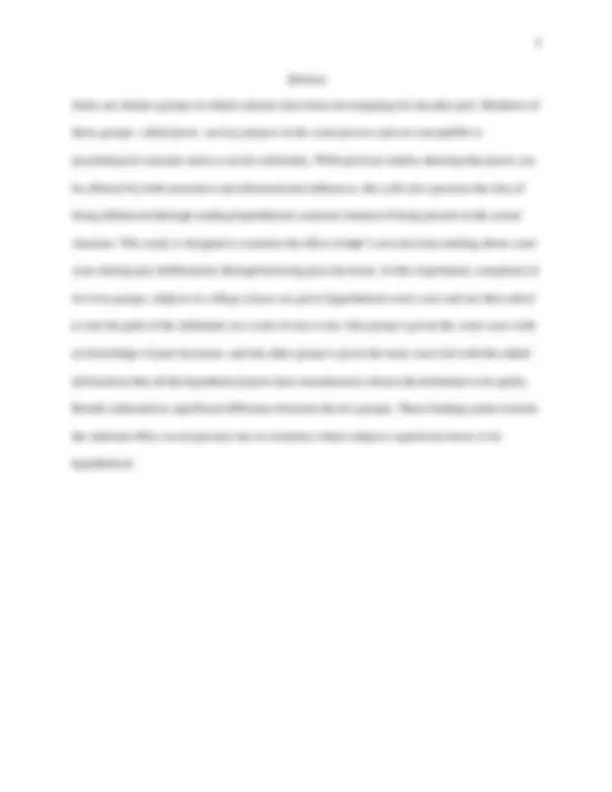
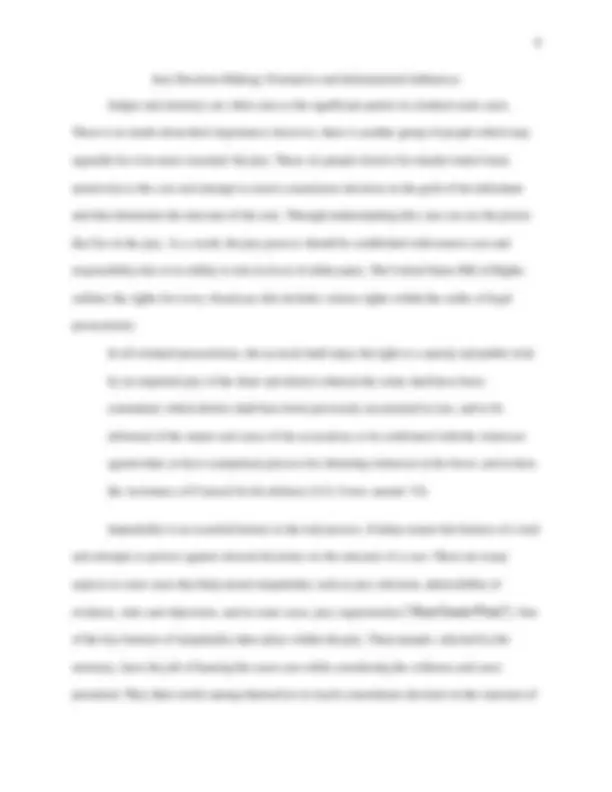
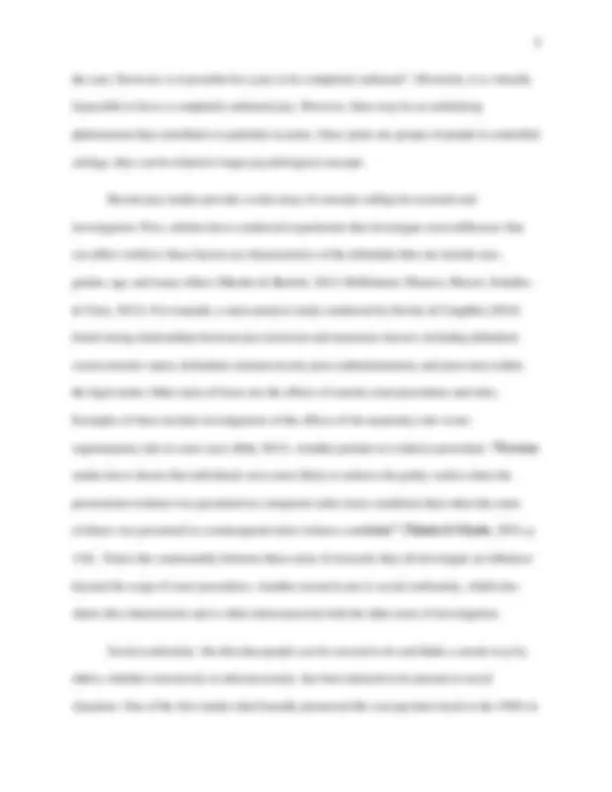
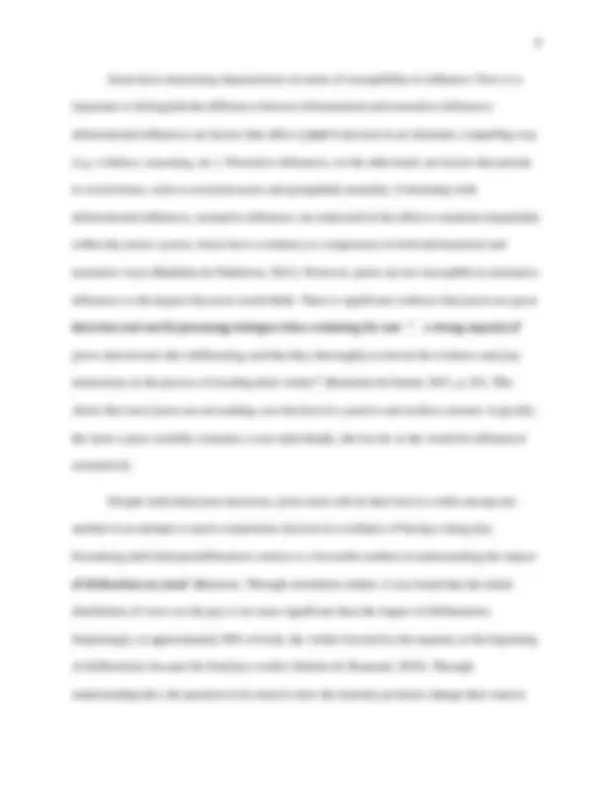
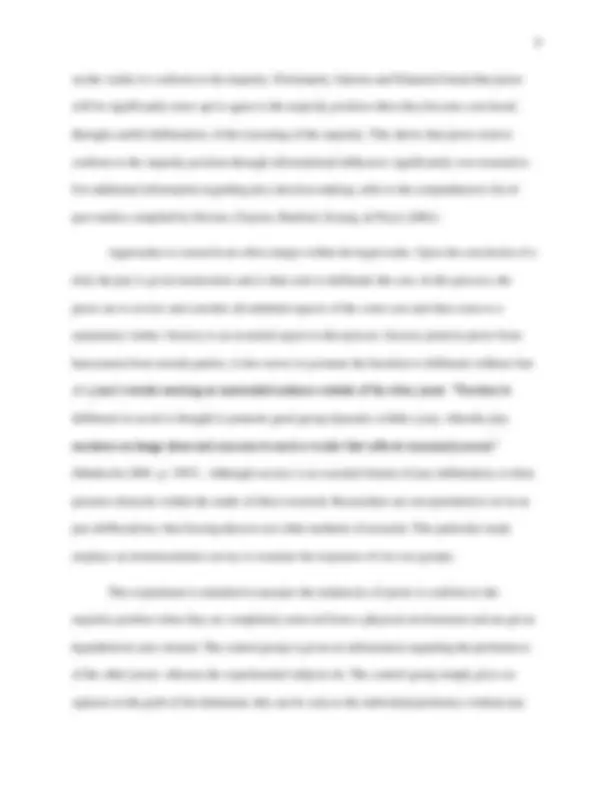
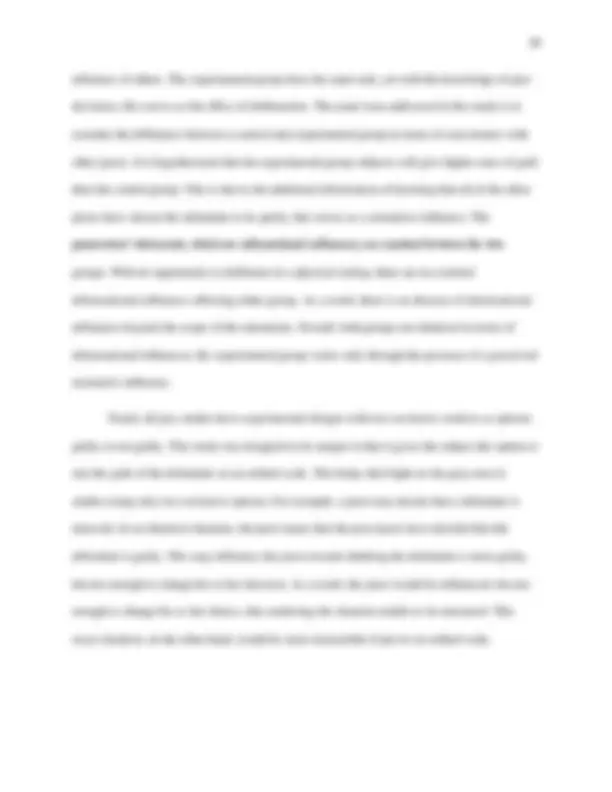
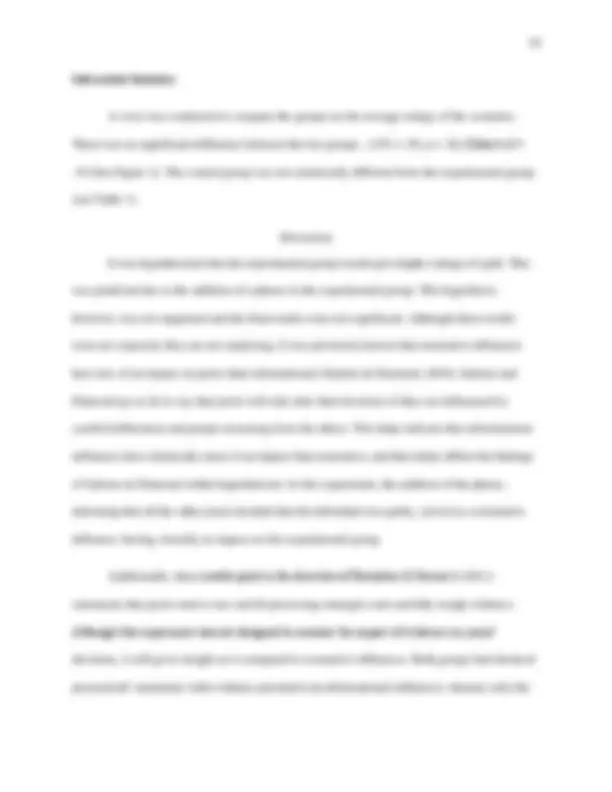
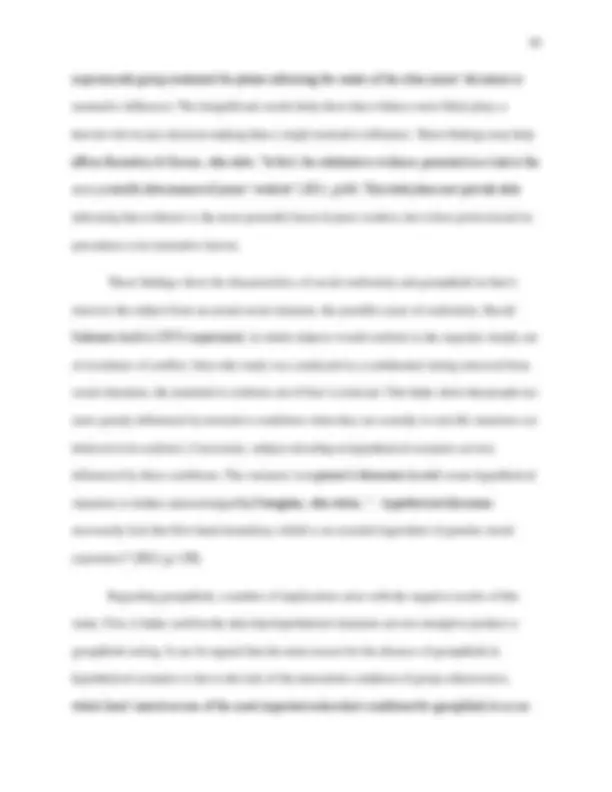
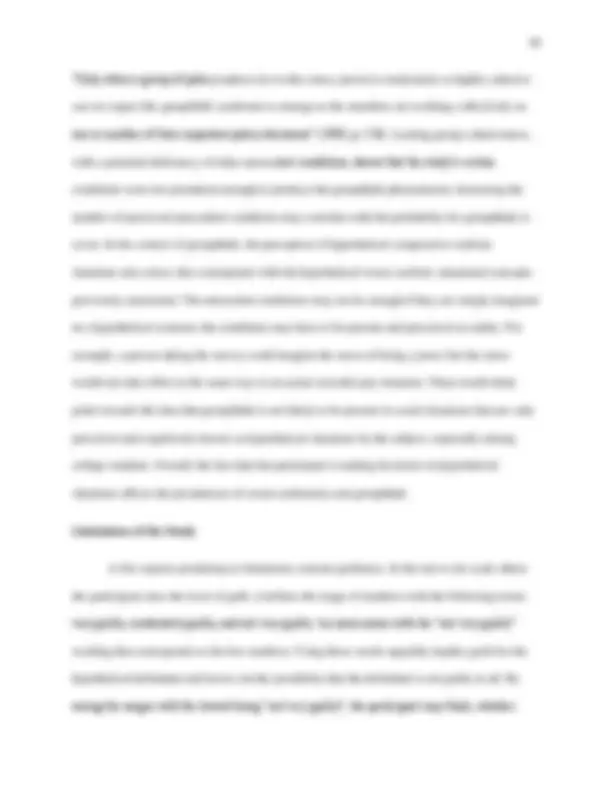
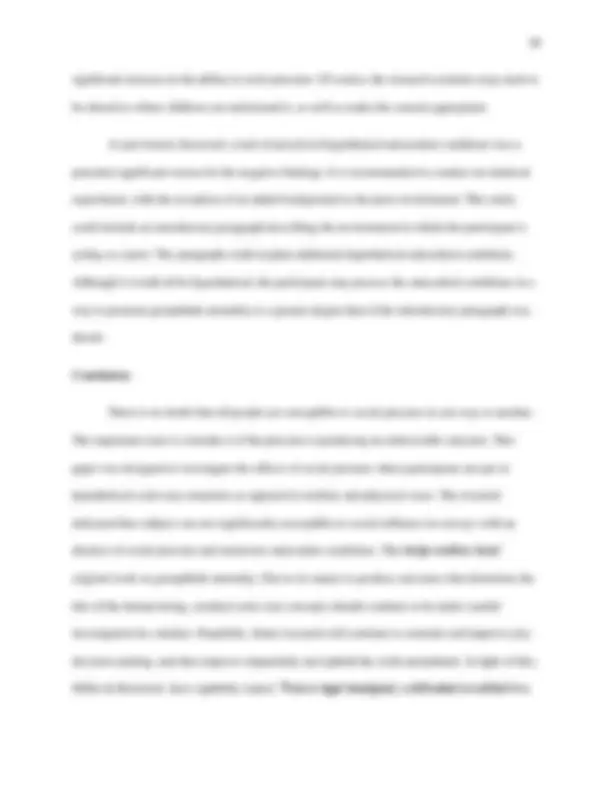

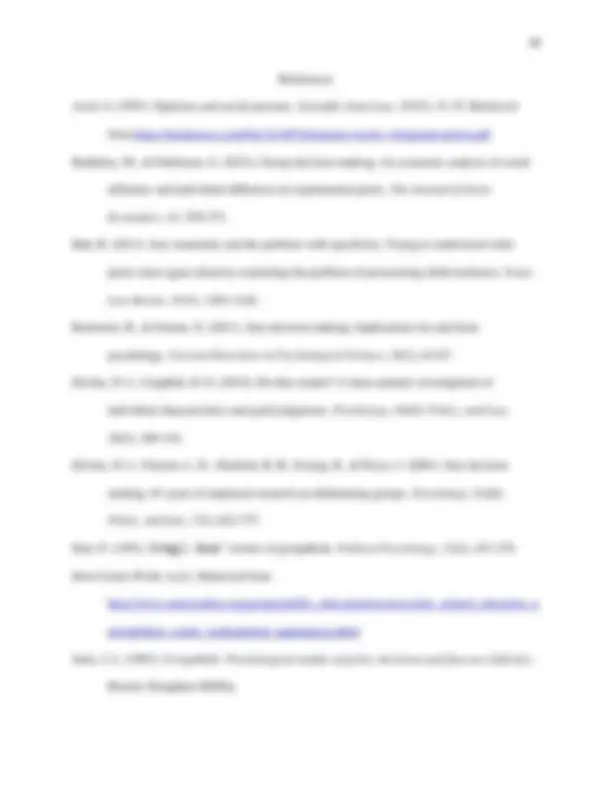
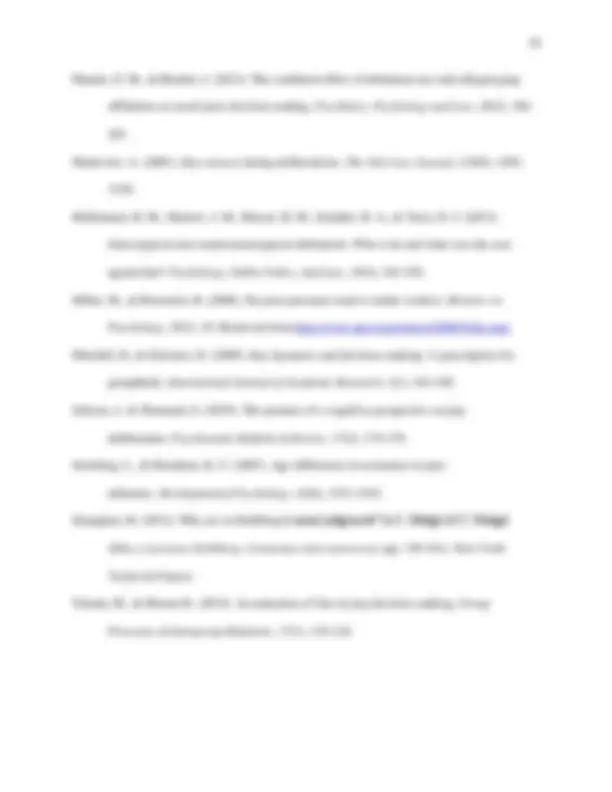
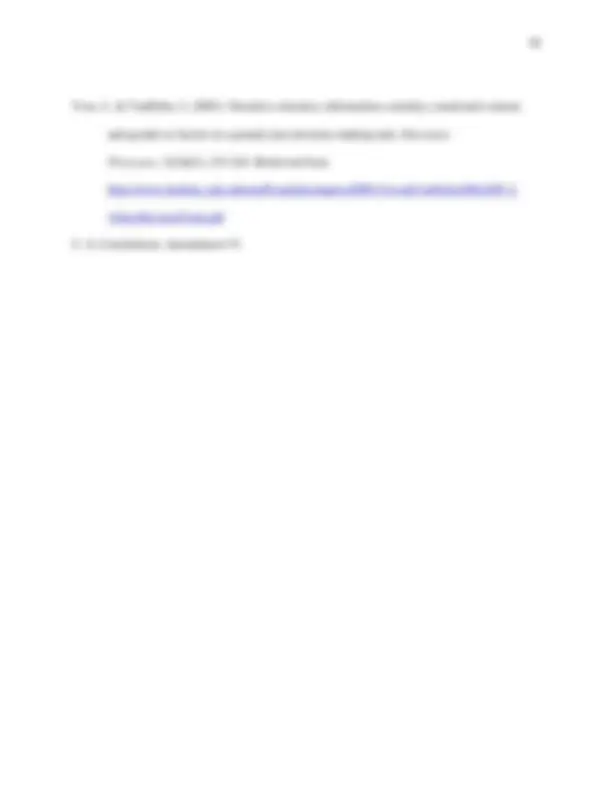

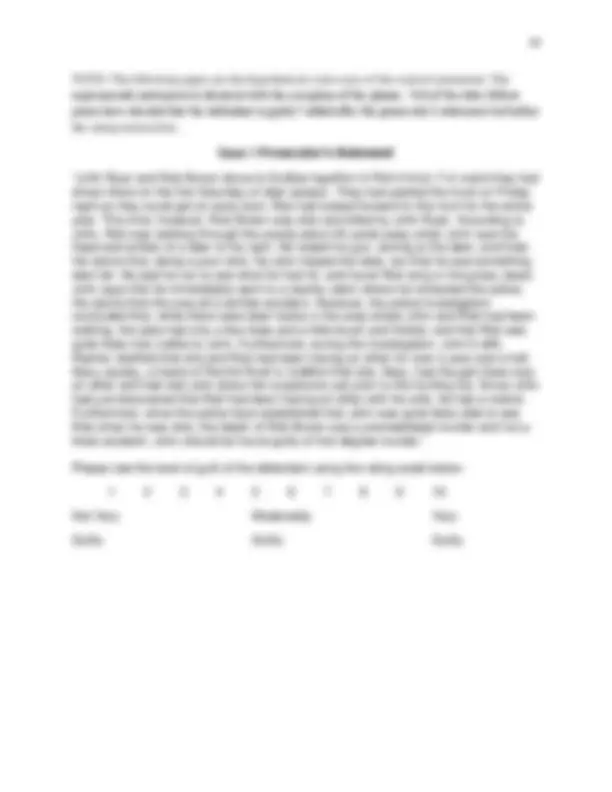
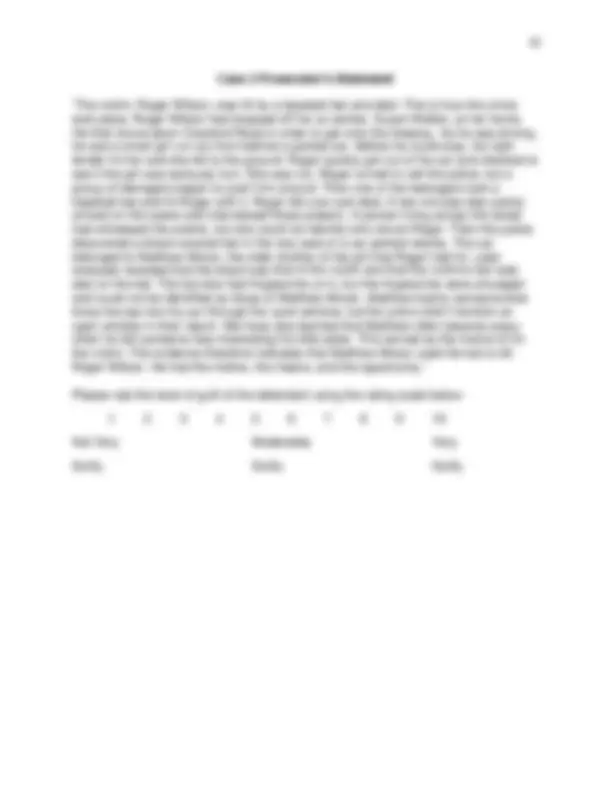
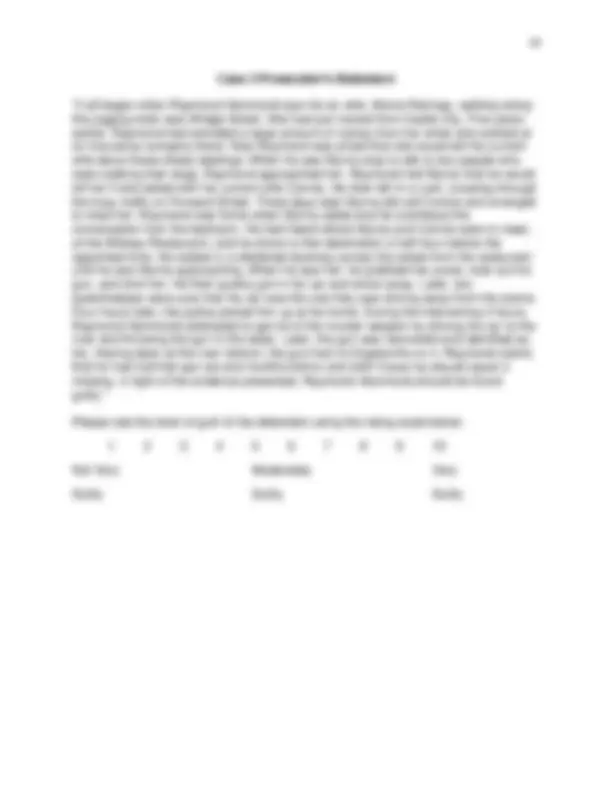


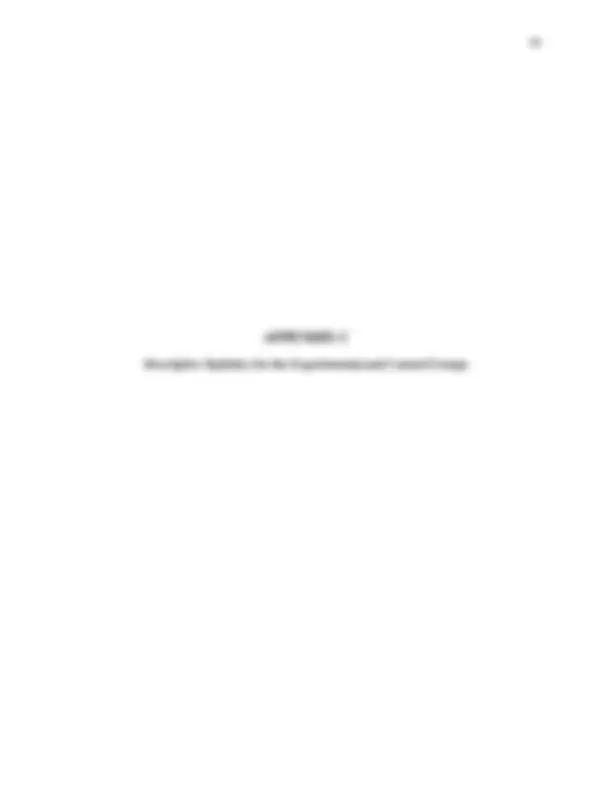
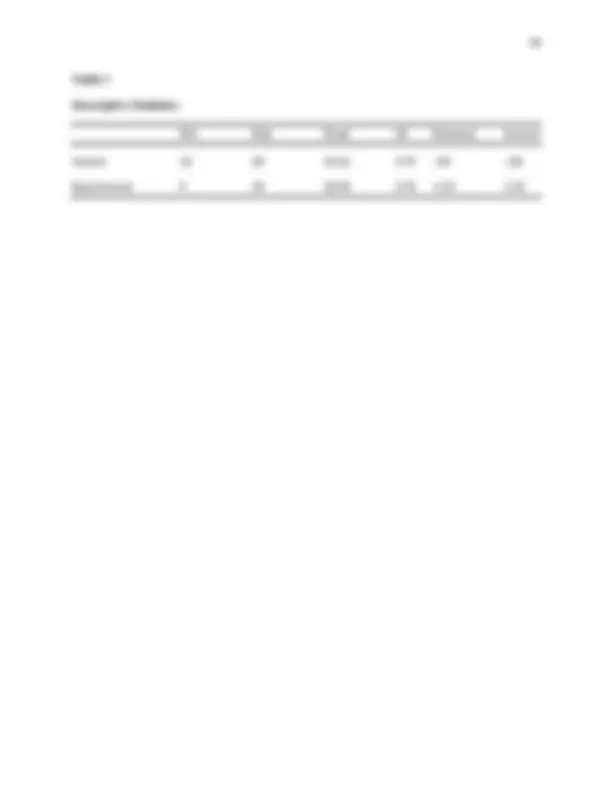




Study with the several resources on Docsity

Earn points by helping other students or get them with a premium plan


Prepare for your exams
Study with the several resources on Docsity

Earn points to download
Earn points by helping other students or get them with a premium plan
Community
Ask the community for help and clear up your study doubts
Discover the best universities in your country according to Docsity users
Free resources
Download our free guides on studying techniques, anxiety management strategies, and thesis advice from Docsity tutors
A study investigating the impact of peer decisions on jury deliberations, examining the role of normative and informational influences in jury decision-making. The study compares two test groups, one with no knowledge of peer decisions and the other with the added information of unanimous peer choices. The document also explores the relationship between jury decisions and various factors, including socioeconomic status, criminal record, and juror trust, as well as the concept of groupthink and its impact on decision-making.
What you will learn
Typology: Study notes
1 / 32

This page cannot be seen from the preview
Don't miss anything!

























By
A thesis submitted in partial fulfillment of the requirements of the University Honors Program University of South Florida, St. Petersburg July 16, 2014 Thesis Director: Christina Salnaitis, Ph.D. Assistant Professor, College of Arts and Sciences
University Honors Program University of South Florida St. Petersburg, Florida CERTIFICATE OF APPROVAL
This is to certify that the Honors Thesis of
has been approved by the Examining Committee on July 16, 2014 as satisfying the thesis requirement of the University Honors Program Examining Committee:
Thesis Director: Christina Salnaitis, Ph.D. Assistant Professor, College of Arts and Sciences
Thesis Committee Member: Shun-Yung Kevin Wang, Ph.D. Assistant Professor, College of Arts and Sciences
Jury Decision-Making: Normative and Informational Influences Judges and attorneys are often seen as the significant parties in criminal court cases. There is no doubt about their importance; however, there is another group of people which may arguably be even more essential: the jury. These six people (twelve for murder trials) listen attentively to the case and attempt to reach a unanimous decision on the guilt of the defendant and thus determine the outcome of the case. Through understanding this, one can see the power that lies in the jury. As a result, the jury process should be established with utmost care and responsibility due to its ability to rule in favor of either party. The United States Bill of Rights outlines the rights for every American; this includes various rights within the realm of legal prosecutions: In all criminal prosecutions, the accused shall enjoy the right to a speedy and public trial, by an impartial jury of the State and district wherein the crime shall have been committed, which district shall have been previously ascertained by law, and to be informed of the nature and cause of the accusation; to be confronted with the witnesses against him; to have compulsory process for obtaining witnesses in his favor, and to have the Assistance of Counsel for his defence (U.S. Const. amend. VI). Impartiality is an essential feature in the trial process. It helps ensure the fairness of a trial and attempts to protect against skewed decisions on the outcome of a case. There are many aspects to court cases that help ensure impartiality such as jury selection, admissibility of evidence, rules and objections, and in some cases, jury sequestration (“How Courts Work”). One of the key features of impartiality takes place within the jury. These people, selected by the attorneys, have the job of hearing the court case while considering the evidence and cases presented. They then confer among themselves to reach a unanimous decision on the outcome of
the case. However, is it possible for a jury to be completely unbiased? Obviously, it is virtually impossible to have a completely unbiased jury. However, there may be an underlying phenomenon that contributes to partiality in juries. Since juries are groups of people in controlled settings, they can be related to larger psychological concepts.
Recent jury studies provide a wide array of concepts calling for research and investigation. First, scholars have conducted experiments that investigate extra influences that can affect verdicts; these factors are characteristics of the defendant that can include race, gender, age, and many others (Maeder & Burdett, 2013; McKimmie, Masters, Masser, Schuller, & Terry, 2013). For example, a meta-analysis study conducted by Devine & Caughlin (2014) found strong relationships between jury decisions and numerous factors, including defendant socioeconomic status, defendant criminal record, juror authoritarianism, and juror trust within the legal realm. Other areas of focus are the effects of current court procedures and rules. Examples of these include investigations of the effects of the unanimity rule versus supermajority rule in court cases (Bah, 2013). Another pertains to evidence procedure: “Previous studies have shown that individuals were more likely to endorse the guilty verdict when the prosecution evidence was presented in a temporal order (story condition) than when the same evidence was presented in a nontemporal order (witness condition)” (Takada & Murata, 2014, p. 110). Notice the commonality between these areas of research: they all investigate an influence beyond the scope of court procedures. Another research area is social conformity, which also shares this characteristic and is often interconnected with the other areas of investigation.
Social conformity- the idea that people can be coerced to do and think a certain way by others, whether consciously or subconsciously- has been deemed to be present in social situations. One of the first studies that formally pioneered this concept dates back to the 1950s in
few. As a result, many characteristics of the groupthink mentality can be attributed to jury deliberations.
Through understanding that juries carry a number of similar characteristics of policy- making groups, it would be reasonable to apply parts of Janis’ original work to juries. Mitchell and Eckstein (2009) applied Janis’ symptoms of groupthink as the precursors to faulty decision- making in juries. Symptoms include: overestimation of the group, illusion of invulnerability, belief in inherent morality, closed-mindedness, collective rationalization, stereotypes of out- groups, pressures toward uniformity, self-censorship, illusion of unanimity, and direct pressure on dissenters. Groupthink mentality may lead to faulty decision-making, clearly showing the importance of addressing this topic within the realms of juries. Jurors decide on cases that determine the outcome, or possibly fate, of the case; it follows that there should be efforts to prevent it in order to achieve the fairest trial possible. If groupthink occurs, the following risks are present in the courtroom as faulty-decision making consequences: failure to completely survey alternatives, failure to completely survey risks, failure to examine risks of preferred choice, failure to reappraise initially rejected alternatives, poor information search, selective bias in processing information at hand, and failure to work out contingency plans (Mitchell & Eckstein, 2009).
In addition to understanding classical psychological concepts in the context of juries, it is also important to examine jury deliberations within the legal realm. The main issue to address in this study is whether peer influence, solely through knowing the decisions of others, is enough to affect the subject’s ratings of guilt. Knowing others’ decisions commonly takes place in jury deliberations; it is important to understand the ideas surrounding these events.
Jurors have interesting characteristics in terms of susceptibility to influence. First, it is important to distinguish the difference between informational and normative influences: informational influences are factors that affect a juror’s decision in an informed, compelling way (e.g. evidence, reasoning, etc.). Normative influences, on the other hand, are factors that pertain to social norms, such as social pressures and groupthink mentality. Contrasting with informational influences, normative influences are undesired in the effort to maintain impartiality within the justice system. Jurors have a tendency to compromise in both informational and normative ways (Baddeley & Parkinson, 2012). However, jurors are not susceptible to normative influences to the degree that most would think. There is significant evidence that jurors use great discretion and careful processing strategies when evaluating the case: “…a strong majority of jurors interviewed after deliberating said that they thoroughly reviewed the evidence and jury instructions in the process of reaching their verdict” (Bornstein & Greene 2011, p. 65). This shows that most jurors are not making case decision in a passive and reckless manner. Logically, the more a juror carefully examines a case individually, the less he or she would be influenced normatively.
Despite individual juror decisions, jurors must still do their best to confer among one- another in an attempt to reach a unanimous decision in avoidance of having a hung jury. Examining individual predeliberation verdicts is a favorable method in understanding the impact of deliberation on jurors’ decisions. Through simulation studies, it was found that the initial distribution of views on the jury is far more significant than the impact of deliberations. Surprisingly, in approximately 90% of trials, the verdict favored by the majority at the beginning of deliberations became the final jury verdict (Salerno & Diamond, 2010). Through understanding this, the question to be raised is how the minority positions change their stances
influence of others. The experimental group does the same task, yet with the knowledge of peer decisions; this serves as the effect of deliberation. The main issue addressed in this study is to examine the difference between a control and experimental group in terms of concurrence with other jurors. It is hypothesized that the experimental group subjects will give higher rates of guilt than the control group. This is due to the additional information of knowing that all of the other jurors have chosen the defendant to be guilty; this serves as a normative influence. The prosecutors’ statements, which are informational influences, are constant between the two groups. With no opportunity to deliberate in a physical setting, there are no external informational influences affecting either group. As a result, there is an absence of informational influences beyond the scope of the statements. Overall, both groups are identical in terms of informational influences; the experimental group varies only through the presence of a perceived normative influence.
Nearly all jury studies have experimental designs with two exclusive verdicts as options: guilty or not guilty. This study was designed to be unique in that it gives the subject the option to rate the guilt of the defendant on an ordinal scale. This helps shed light on the gray area in studies using only two exclusive options. For example, a juror may decide that a defendant is innocent. In an identical situation, the juror learns that the peer jurors have decided that the defendant is guilty. This may influence the juror towards thinking the defendant is more guilty, but not enough to change his or her decision. As a result, the juror would be influenced, but not enough to change his or her choice, thus rendering the situation unable to be measured. This exact situation, on the other hand, would be more measurable if put on an ordinal scale.
Method
Participants
Data was collected in three different summer courses at a small southeastern university, making up a total of 37 participants. No compensation was given for participation. No individual coercion was employed to encourage participation in any way. No subjects refused to participate in the study.
Materials
Each participant was given a stapled four-page packet. The first page of the packet was a basic cover page with the researcher’s name, title of study, instructions, and designation that the study is part of an Honors Thesis. The following three pages comprised of a hypothetical court case on each page. The three court cases each presented a prosecutor’s statement, explaining the nature of what had happened. After reading a case, the participant then rated on a scale of one to ten on how guilty he or she thinks the defendant was; this was done for all three cases. Each completed packet was scored through adding the three ratings; the range of all possible scores was 3 to 30 (e.g. A score of 30 would mean that the participant assessed all cases with a guilt rating of 10). The hypothetical court cases used were retrieved from a previous study titled “Narrative Structure, Information, Certainty, Emotional Content, and Gender as Factors in a Pseudo Jury Decision-Making Task” by James F. Voss and Julie A. Van Dyke, 2001. Refer to appendix A for court cases.
Inferential Statistics
A t-test was conducted to compare the groups on the average ratings of the scenarios. There was no significant difference between the two groups, t (35) = .59, p = .56, Cohen’s d = .19 (See Figure 2). The control group was not statistically different from the experimental group (see Table 1).
Discussion It was hypothesized that the experimental group would give higher ratings of guilt. This was predicted due to the addition of a phrase in the experimental group. This hypothesis, however, was not supported and the final results were not significant. Although these results were not expected, they are not surprising. It was previously known that normative influences have less of an impact on jurors than informational (Salerno & Diamond, 2010). Salerno and Diamond go as far to say that jurors will only alter their decisions if they are influenced by careful deliberation and proper reasoning from the others. This helps indicate that informational influences have drastically more of an impact than normative, and thus helps affirm the findings of Salerno & Diamond within hypotheticals. In this experiment, the addition of the phrase, indicating that all the other jurors decided that the defendant was guilty, served as a normative influence, having virtually no impact on the experimental group.
Additionally, these results point in the direction of Bornstein & Greene’s (2011) statements that jurors tend to use careful processing strategies and carefully weigh evidence. Although this experiment was not designed to measure the impact of evidence on jurors’ decisions, it still gives insight on it compared to normative influences. Both groups had identical prosecutors’ statements with evidence presented (an informational influence), whereas only the
experimental group contained the phrase informing the reader of the other jurors’ decisions (a normative influence). The insignificant results help show that evidence most likely plays a heavier role in jury decision-making than a single normative influence. These findings may help affirm Bornstein & Greene, who state, “In fact, the substantive evidence presented in a trial is the most powerful determinant of jurors’ verdicts” (2011, p.64). This study does not provide data indicating that evidence is the most powerful factor in juror verdicts, but it does point toward its precedence over normative factors.
These findings show the characteristics of social conformity and groupthink in that it removes the subject from an actual social situation- the possible cause of conformity. Recall Solomon Asch’s (1955) experiment, in which subjects would conform to the majority simply out of avoidance of conflict. Since this study was conducted in a confidential setting removed from social situations, the potential to conform out of fear is removed. This helps show that people are more greatly influenced by normative conditions when they are actually in real-life situations (or believed to be realistic). Conversely, subjects deciding in hypothetical scenarios are less influenced by these conditions. The variances in a person’s demeanor in real versus hypothetical situations is further acknowledged by Straughan, who states, “…hypothetical dilemmas necessarily lack that first-hand immediacy which is an essential ingredient of genuine moral experience” (2012, p. 150).
Regarding groupthink, a number of implications arise with the negative results of this study. First, it helps confirm the idea that hypothetical situations are not enough to produce a groupthink setting. It can be argued that the main reason for the absence of groupthink in hypothetical scenarios is due to the lack of the antecedent condition of group cohesiveness, which Janis’ asserts as one of the most important antecedent conditions for groupthink to occur:
consciously or subconsciously, that the defendant is already guilty. Additionally, there is a risk of ambiguity regarding what the defendant is guilty of. In the survey materials, the prosecutors’ statements may have caused confusion because they fail to state what the defendant is guilty of in the second and third case. The first prosecutor’s statement clearly states that the defendant should be found guilty of first-degree murder. However, the second and third statements only imply that the guilt pertains to murder, but fails to state what degree of murder (e.g. first-degree, second-degree, manslaughter).
There are other issues regarding ambiguity and a lack of information. In the study, it was assumed that the subject knew that there were twelve jurors in the hypothetical situations. The subjects, however, may have thought that there were only six (or any other number that is not twelve). It is known that the majority size can affect the outcome of conformity (Asch 1955). Because of this, the effect of the perceived normative influence may have skewed the final results due to the varying perception of the number of jurors. Additionally, there is a risk that the subjects were ignorant of the unanimity rule in convicting; instead, some may have thought it was a majority rule. Social influence and jury decision-making have been shown to vary between the conditions of majority and unanimity rules (Ohtsubo, Miller, Hayashi, & Masuchi 2004).
Another contribution to limitations could be the lack of a manipulation check. In the process of the experiment, there is a chance that some of the subjects from the experimental group may not have noticed or comprehended the last sentence indicating that all of the other fellow jurors have decided that the defendant is guilty. As a result, the added sentence in the experimental group may not have had the desired effect on the subject. In retrospect, adding a manipulation check would have helped increase the validity. An example of a manipulation check would be to ask the subjects of the experimental group if they noticed the sentence
indicating the other jurors’ decision on guilt. On an extra paper after the experiment, they could check the following: yes, no, or maybe. If they check no, then that particular subject’s answers would be thrown out.
Of course, the small sample size also serves as a limitation. Although 37 participants may begin to give a decent amount of data to analyze, it would have been ideal to achieve a much higher number of participants; this would help increase the validity of the study.
Future Directions
It is important to note that this study’s hypothetical cases all pertained to murder offenses. It is recommended to have this research duplicated with court cases that explore other types of offenses (e.g. larceny, burglary, assault, etc.), and examine any potential differences than the statistically insignificant results of this experiment. If significant results are produced for other types of offenses, it would be encouraged to explore the reasoning surrounding the variances of significance between different offenses.
Through recalling the research methodology, it is seen that the demographic of the test participants were college students at a small southeastern university. It is estimated that the vast majority of these students’ ages fell in the range of 18-24 years old. It is previously known that age can affect the degree in which people conform and resist peer pressure, with a significant increase in social pressure resistance taking place between the ages of 14 and 18 in a person’s life (Steinberg & Monahan 2007). It would be interesting to duplicate this research with different age groups and investigate any differences in results. This is especially encouraged to be duplicated for children aged younger than 14 years old, where most have not experienced a
verdict that reflects jurors' genuine beliefs, not one made to conform to normative pressures, to end a lengthy deliberation or to meet an implicit deadline imposed by a dynamite charge” (2008, p. 18).
References Asch, S. (1955). Opinions and social pressure. Scientific American , 193 (5), 31-35. Retrieved from https://brainmass.com/file/321407/Solomon+Asch+-+Original+article.pdf Baddeley, M., & Parkinson, S. (2012). Group decision-making: An economic analysis of social influence and individual difference in experimental juries. The Journal of Socio- Economics , 41 , 558-573. Bah, B. (2013). Jury unanimity and the problem with specificity: Trying to understand what jurors must agree about by examining the problem of prosecuting child molesters. Texas Law Review , 91 (5), 1203-1226. Bornstein, B., & Greene, E. (2011). Jury decision making: Implications for and from psychology. Current Directions in Psychological Science , 20 (1), 63-67. Devine, D. J., Caughlin, D. E. (2014). Do they matter? A meta-analytic investigation of individual characteristics and guilt judgments. Psychology, Public Policy, and Law, 20 (2), 109-134. Devine, D. J., Clayton, L. D., Dunford, B. B., Seying, R., & Pryce, J. (2001). Jury decision making: 45 years of empirical research on deliberating groups. Psychology, Public Policy, and Law , 7 (3), 622-727. Hart, P. (1991). Irving L. Janis’ victims of groupthink. Political Psychology , 12 (2), 247-278. How Courts Work. (n.d.). Retrieved from http://www.americanbar.org/groups/public_education/resources/law_related_education_n etwork/how_courts_work/pretrial_appearances.html Janis, I. L. (1983). Groupthink: Psychological studies of policy decisions and fiascoes (2nd ed.). Boston: Houghton Mifflin.